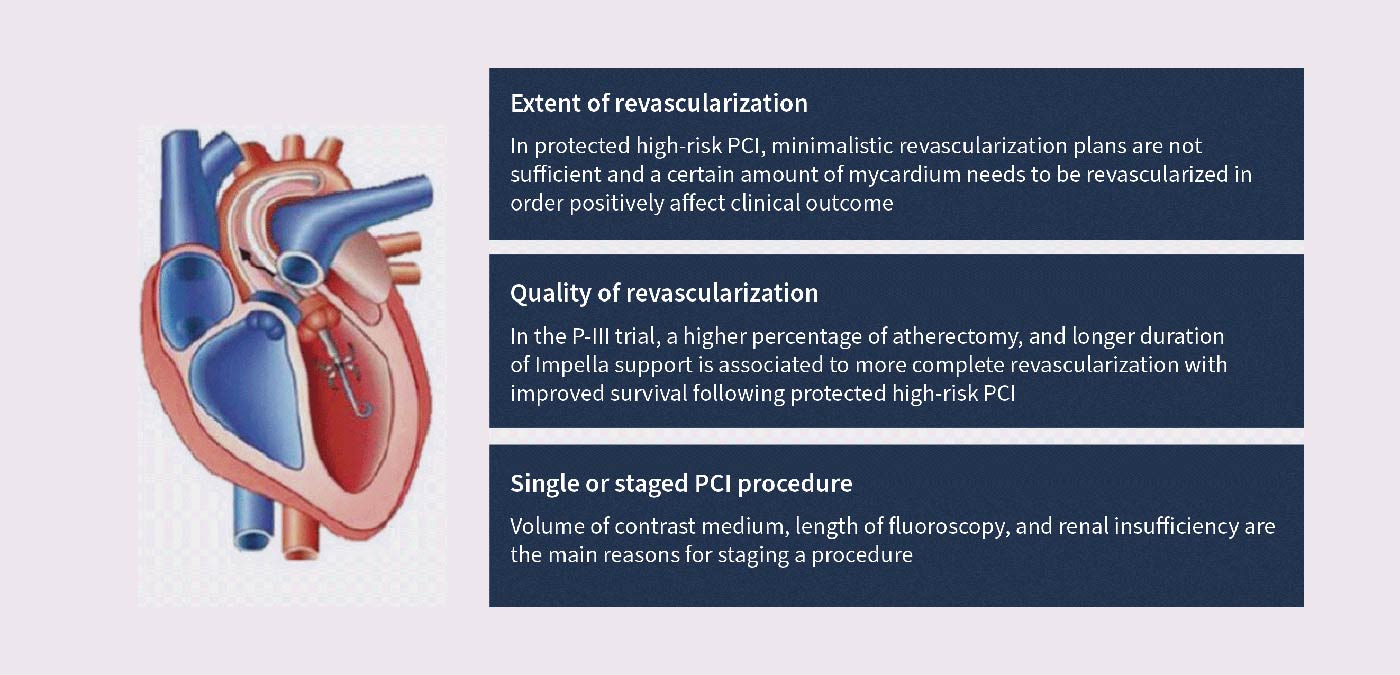The Heart of the Matter
Best Practice Approach on High-Risk Percutaneous Coronary Intervention
“The Heart of the Matter: Best practice approach on high-risk percutaneous coronary intervention” is a publication of 8 articles addressing patient management and mechanical circulatory support (MCS) related to protected, high-risk percutaneous coronary intervention (PCI). The articles cover topics including best practices in:
Discover Additional Insights
Author Interviews

European best practice: a step forward to optimize Impella-protected percutaneous coronary intervention to improve outcome after high-risk coronary interventions
by N. Werner, F. Burzotta, and J.-M. Sinning
This overview article provides a framework for this series of articles. It addresses European recommendations and best practices for patient management and mechanical circulatory support (MCS)during high risk intervention.


Optimized patient selection in high-risk protected percutaneous coronary intervention
Percutaneous left ventricular assist devices (pLVADs) have the potential to minimize the risk of hemodynamic deterioration during the procedure, but they are associated with risks and require experienced interventional cardiologists. Thus, the authors of this article write “Patient selection is an essential key feature to a safe and successful outcome.”


Standardized pre-procedural clinical workup for protected percutaneous coronary intervention
Pre-procedural assessment is important in the complex patient population undergoing Protected PCI. Identifying and preparing the femoral access site is a critical aspect of this workup. This article describes pre-procedural preparation, with a particular focus on imaging techniques for screening and guiding vascular access in patients undergoing Protected PCI.


What is known in pre-, peri-, and post-procedural anticoagulation in micro-axial flow pump protected percutaneous coronary intervention?
“The precarious balance between bleeding and thrombosis in patients with p-LVAD support is often the primary reason that patients’ outcomes are jeopardized,” write the authors of this article, which discusses anticoagulation strategies and anticoagulant management in the setting of Protected PCI.


Defining the optimal revascularization strategy during protected high-risk procedures with Impella heart pumps
This article explores optimal revascularization strategies for patients undergoing Protected PCI. The authors note that recently published PROTECT III trial data suggest that more complete revascularization (CR) during Impella-protected PCI with more extensive lesion preparation and treatment results in reduced need for repeat revascularization and improved survival.


Handling high-risk patients in the catheterization laboratory
This article describes how the interventional cardiology team handles high-risk patients in the cath lab, from procedural preparation and planning through procedural monitoring, as well as weaning strategies and access site management.


Optimal bail-out and complication management strategies in protected high-risk percutaneous coronary intervention with the Impella heart pump
In this article the authors describe techniques for Impella removal with or without pre-closure and discuss how to prevent and manage complications associated with large-bore femoral access.

Specific Clinical Vignettes in High-Risk Protected Percutaneous Coronary Intervention
This article presents 3 case vignettes that provide practical insights and reinforce best practices. The authors emphasize that several cardiac and patient-related factors come into play when considering patients for Protected percutaneous coronary intervention (PCI).
Sign Up for Latest Updates
NPS-3422